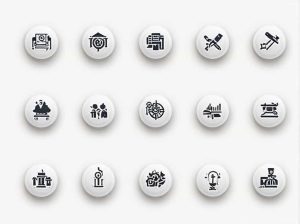In today’s digital era education is evolving rapidly. One of the most significant changes is the shift toward a paperless classroom. With technological advancements schools and educators are now embracing digital tools to replace traditional paper-based methods.
Going paperless has numerous benefits from reducing environmental impact to enhancing student engagement and improving efficiency. But how can you successfully transition to a paperless classroom? This guide explores the advantages challenges and best practices for making the switch.
1. What Is a Paperless Classroom?
A paperless classroom is an educational setting where teachers and students minimize or eliminate paper use by relying on digital tools. Instead of printing assignments textbooks or worksheets everything is managed using laptops tablets interactive whiteboards and cloud-based platforms.
Common Digital Tools in a Paperless Classroom:
- Learning Management Systems (LMS) – Platforms like Google Classroom Microsoft Teams and Moodle help teachers organize lessons and assignments.
- E-books and Online Resources – Replace physical textbooks with digital versions.
- Cloud Storage (Google Drive Dropbox OneDrive) – Store and share files without printing.
- Educational Apps and Websites – Enhance learning with interactive resources.
2. Benefits of Moving to a Paperless Classroom
a) Environmental Impact
Reducing paper use helps conserve trees lower carbon emissions and reduce waste. Schools generate massive amounts of paper waste and switching to digital materials significantly cuts down on this footprint.
b) Cost Savings
Printing photocopying and purchasing paper supplies can be expensive. A paperless classroom eliminates the need for:
- Printers and ink cartridges
- Paper notebooks and worksheets
- Physical storage for files and records
c) Improved Organization and Efficiency
With digital tools students and teachers can store and access materials instantly. No more lost assignments or cluttered desks—everything is neatly organized in the cloud.
d) Better Collaboration and Engagement
Digital tools encourage interactive learning. Students can collaborate in real time on shared documents engage in virtual discussions and receive instant feedback from teachers.
e) Accessibility and Inclusivity
A paperless classroom allows for better accessibility. Students with disabilities can use screen readers speech-to-text tools and adjustable font sizes making learning more inclusive.
3. Challenges of a Paperless Classroom and How to Overcome Them
a) Digital Divide
Not all students have access to devices or a stable internet connection at home. To address this:
- Schools can provide loaner devices or install Wi-Fi hotspots.
- Teachers can allow offline access to learning materials.
b) Screen Fatigue
Staring at screens for long hours can cause eye strain. Solutions include:
- Encouraging frequent breaks.
- Using blue light filters and adjustable screen brightness.
- Incorporating hands-on and verbal activities.
c) Training and Adaptation
Some teachers and students may struggle with new technology. Providing training workshops and step-by-step guides can ease the transition.
4. Steps to Successfully Transition to a Paperless Classroom
Step 1: Choose the Right Digital Tools
Select platforms that fit your teaching style and subject requirements. Popular options include:
- Google Classroom (for assignments and collaboration).
- Khan Academy (for video-based learning).
- Evernote or Notion (for note-taking).
Step 2: Digitize Learning Materials
Convert textbooks worksheets and lesson plans into PDFs Google Docs or interactive presentations.
Step 3: Implement Cloud Storage
Encourage students to store files in the cloud instead of printing. Platforms like Google Drive and OneDrive ensure easy access.
Step 4: Use Online Assessment Tools
Replace traditional tests with digital quizzes using Kahoot Quizizz or Google Forms. This saves paper and provides instant results.
Step 5: Encourage Student Collaboration
Use discussion forums group projects and shared documents to promote teamwork without paper.
Step 6: Monitor and Improve
Track the progress of your paperless initiative gather feedback from students and make necessary adjustments.
5. Real-Life Examples of Paperless Classrooms
Example 1: A High School Using Google Classroom
A high school in California eliminated 90% of paper use by integrating Google Classroom for assignments and grading. Students submit work online and teachers provide instant feedback.
Example 2: A University Going Fully Digital
A university in Europe replaced physical textbooks with e-books and online libraries reducing costs for students while making learning materials more accessible.
6. Future of Paperless Education
With technology advancing rapidly paperless classrooms are becoming the norm. In the future we may see:
- AI-powered learning assistants that personalize education.
- Virtual and augmented reality for immersive learning experiences.
- Increased use of e-ink devices that reduce screen fatigue.
Transitioning to a paperless classroom is a smart move that benefits both students and the environment. Although challenges exist with proper planning and the right digital tools any school can successfully make the shift.
By embracing technology educators can create a more efficient engaging and sustainable learning environment for future generations.



